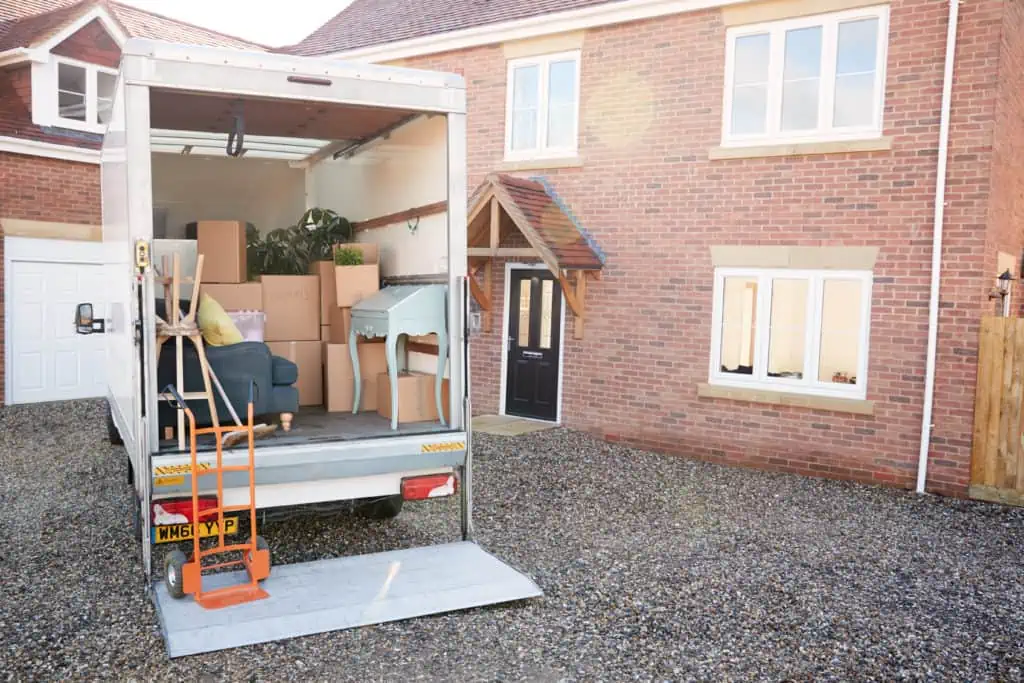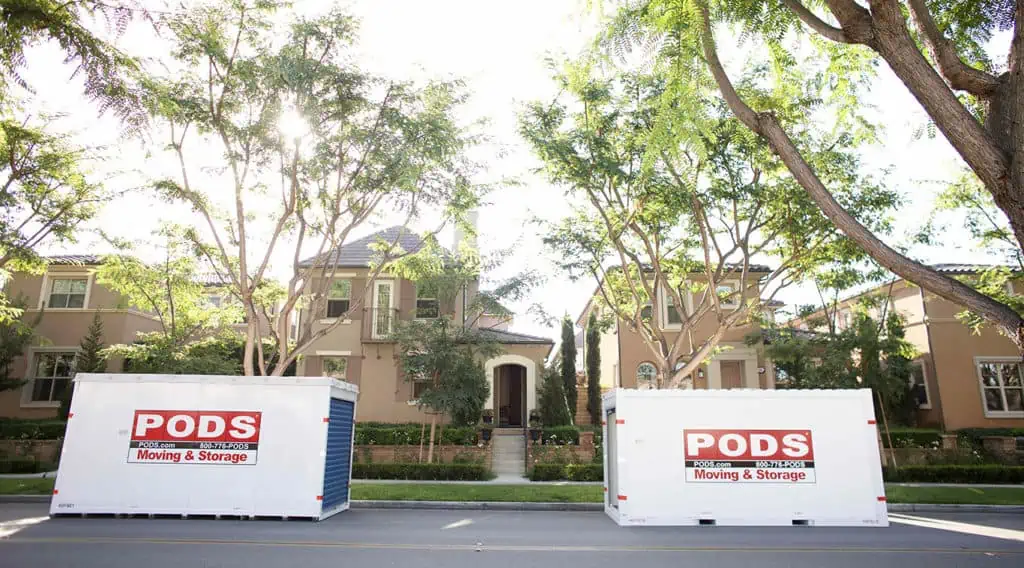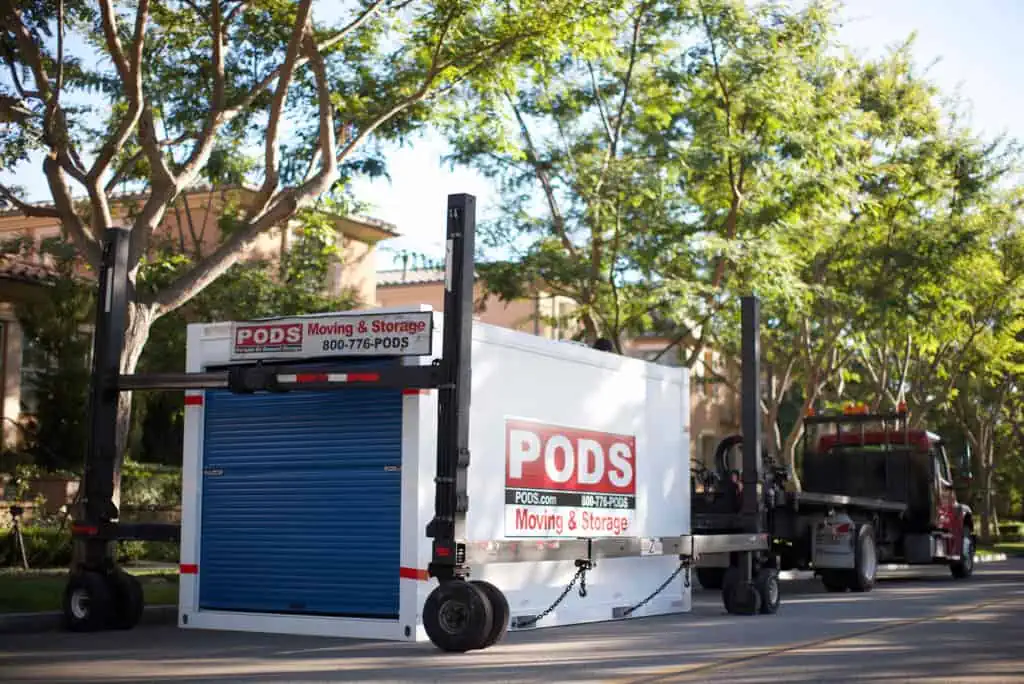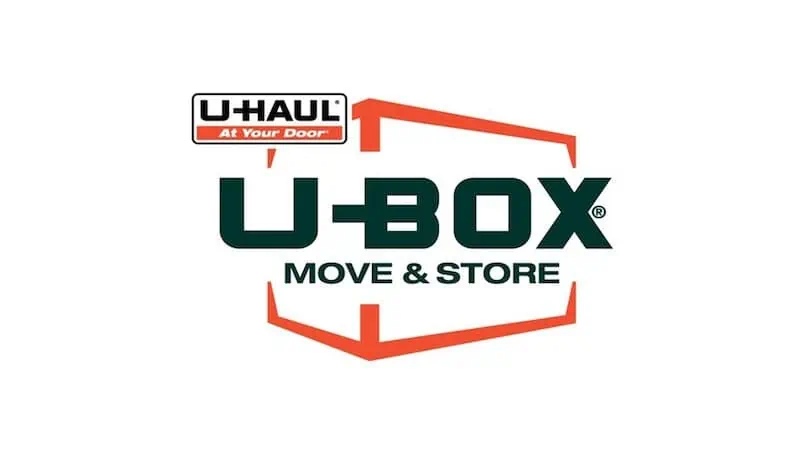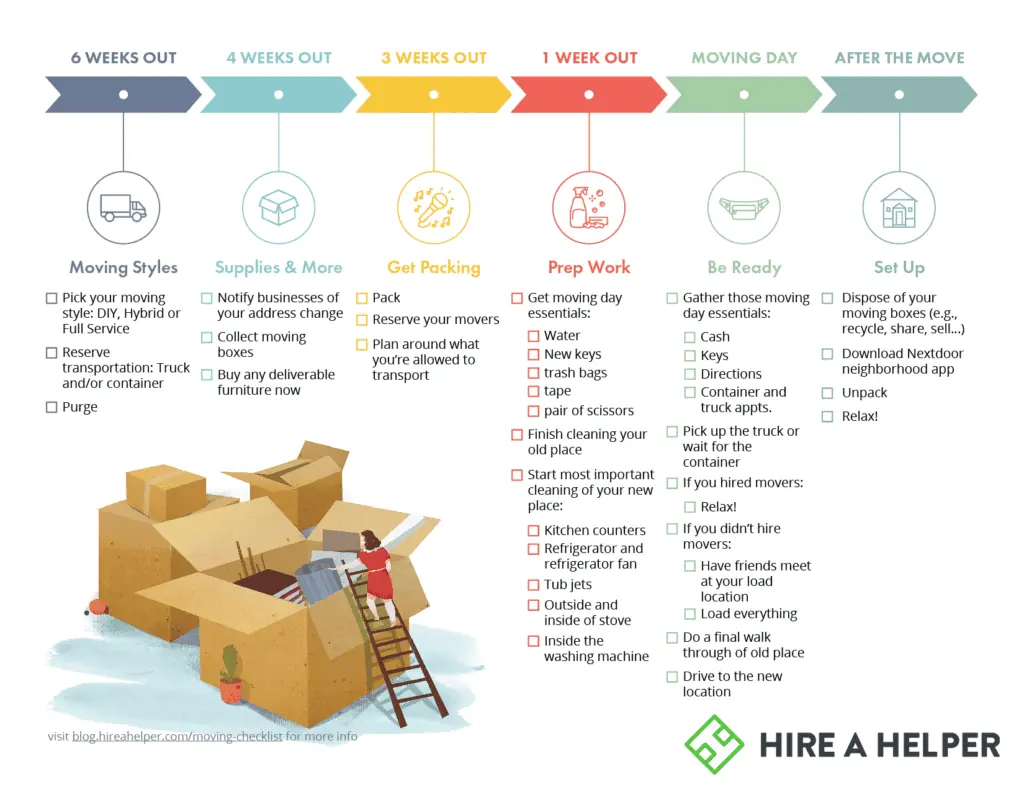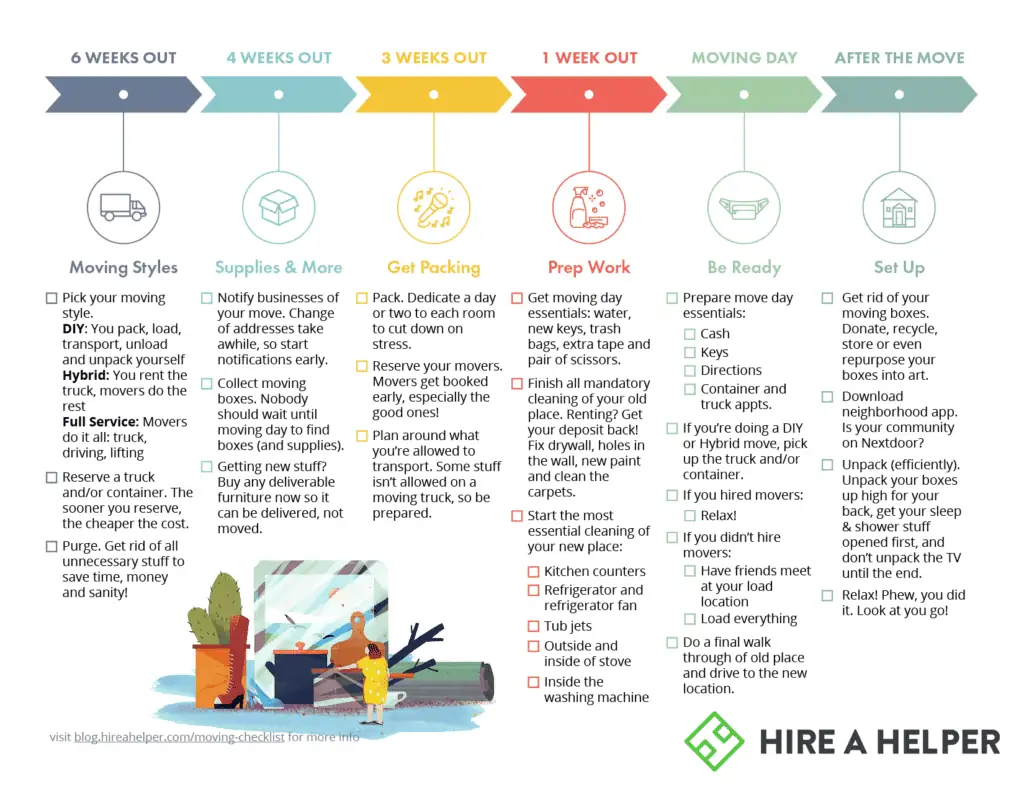Over the past 15 years, you may have noticed Penske trucks parked in the back or front of your local Home Depot. These days, in addition to offering a convenient pick-up and drop-off location for Penske rentals, Home Depot actually maintains its own branded moving trucks.
Naturally, we had to take a closer look and see how Home Depot stacks up against another major brand: U-Haul. While U-Haul advertises its moving truck prices “as low as $19.95,” Home Depot has a very different way of structuring its rental rates. This can make it tricky to determine the cheapest solution for your move.
We did a deep dive into how each company prices its truck rentals, the quality of the trucks themselves, and other pros and cons. For the final step of our moving truck rental comparison, we rented a Home Depot box truck for the same short-and-to-the-point move that we’d previously rented a U-Haul for — about 8 miles of driving total. When it comes to Home Depot vs. U-Haul rental trucks, this is how each company fared.
What’s the Difference Between UHaul and Home Depot Trucks?
Before we get into the details of our comparison, here are the basics of how the trucks and companies differ.
| The Home Depot Truck Rentals | U-Haul Truck Rentals |
|
|
With that out of the way, let’s dive in!
Truck Sizes: Home Depot vs. Uhaul Truck Rental
While Penske trucks are available at certain Home Depot locations, these rentals are done through Penske and not Home Depot. For that reason, this article will focus exclusively on Home Depot branded moving trucks vs. U-Haul moving trucks. And since Home Depot trucks are only available for local moves, our comparison will be of local moving options — starting with the truck sizes.
Home Depot Truck Sizes
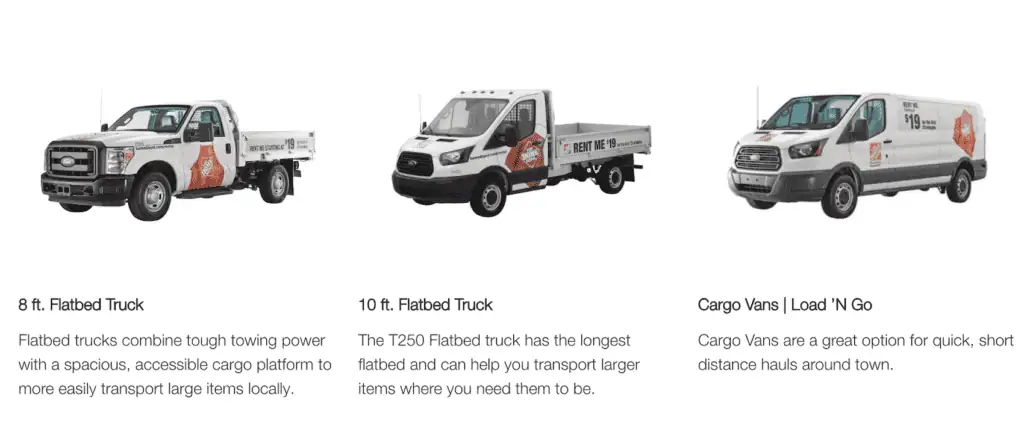
Although Home Depot’s fleet includes two different flatbed trucks and a cargo van, there is only one size of moving truck available: the 12-foot box truck. Sizewise, this truck fits right between the two smallest U-Haul trucks with a volume capacity of 515 cubic feet. That’s enough space to move a studio or 1-bedroom apartment. Anything bigger will require multiple trips (and more time). A tow hitch is included, but you have to confirm the towing capacity of the truck when you rent it. On the plus side, it comes with a loading ramp and a dolly.
If you’re interested in Home Depot’s other branded trucks, here’s the lineup for the rest of their local-move vehicles:
- Cargo Van: 142.9 cubic feet of cargo volume is not too shabby if you’re moving a dorm room or a few big items.
- T250 Flatbed Truck: The T250 flatbed truck has a whopping 10-foot bed and sides that fold down. It’s easier to load than a regular pickup and capable of carrying a wide array of oversized items — from sheets of plywood to an extra-long couch and more.
- F250 Flatbed Truck: The F250 flatbed also has sides that fold down like the T250, but the truck bed is slightly shorter (at 8 feet long). If you’d prefer a regular pickup truck, check with Home Depot stores in your area to see if any are available. Our local Home Depot previously carried one regular F250 with an 8-foot bed, which is a pretty standard size.
U-Haul Truck Sizes
U-Haul’s wide selection of box truck sizes is where the brand really shines. With four different sizes, you can rent a single truck for moves ranging from a studio apartment to a 4-bedroom home without having to take more than one trip. The three larger truck sizes come with U-Haul’s EZ-Load ramp, but unlike when you rent from Home Depot, a dolly is not included.
Since U-Haul has so many options to choose from, we’ve organized the truck details into the table below.
| Size | Volume | Best For | Loading Ramp | Towing Capability? | Dolly Included? |
| 10-Foot Truck | 402 cubic feet | Studio/1-Bed | No | Yes | No |
| 15-Foot Truck | 764 cubic feet | 1- to 2-Bed | Yes | Yes | No |
| 20-Foot Truck | 1,016 cubic feet | 2- to 3-Bed | Yes | Yes | No |
| 26-Foot Truck | 1,682 cubic feet | 3- to 4-Bed | Yes | Yes | No |
U-Haul also rents an 8-foot pickup truck and 9-foot cargo van, which are only available for local moves (with pick-up from and return to the same location).
Pricing: Home Depot vs. Uhaul Truck Rentals
Home Depot Truck Rental Pricing
The primary factor in Home Depot’s pricing model is time. Box trucks are available to rent by the hour (with a 75-minute minimum), by the day, or by the week. Exact pricing is determined at the store, but the advertised pricing online is as follows:
- $29.00 for 75 minutes
- $30.00 for every additional hour
- $149.00 per day (regardless of number of hours)
- $1,043.00 per week
Your rental may be subject to additional fees, such as:
- Environmental fee (may apply)
- Damage protection (15% of the cost of your rental) — Optional
After all that, you still have to cover tax and gas, but at least there are no mileage fees!
U-Haul Truck Rental Pricing
U-Haul structures their rental pricing very differently. Long-distance/one-way rentals are more or less flat-rate with some variable, additional fees.
But if you’re renting locally and will be returning the U-Haul truck to the same place you picked it up, the pricing is based on a daily rate, miles driven, and any coverage you decide to purchase. The mileage fee varies based on location, but here in the Tampa Bay area, it’s currently $1.19 per mile.
| Truck Size | Base Daily Rate | Additional Mileage Fee* |
| 10-Foot Truck | $19.95 | $1.19 per mile |
| 15-Foot Truck | $29.95 | $1.19 per mile |
| 20-Foot Truck | $39.95 | $1.19 per mile |
| 26-Foot Truck | $49.95 | $1.19 per mile |
*Mileage fee rates vary based on location and day.
They also slap on a few small fees, such as:
- Vehicle License/Cost Recovery Fee ($1.20)
- Environmental fee ($1.00 – $5.00)
- Damage protection (cost varies) — Optional
This all adds up to your total price — plus tax and gas, of course.
Which Moving Truck Rental Is Cheaper?
The difficulty with making this comparison is that U-Haul charges by the mile and Home Depot charges by the hour. And while it’s relatively easy to estimate the number of miles if you know where you’re going, it’s just as easy to underestimate the length of time it takes to complete a move. To help with this comparison, we’ve broken it down a few different ways.
Renting a truck from Home Depot by the hour means paying $29 for the first 75 minutes and $30 per additional hour. After 5 hours and 15 minutes, your bill will match the daily rate. So if your move will take longer than that, you should definitely go with the daily rate.
U-Haul’s cheap daily base rates are offset by the additional mileage fee of $1.19 per mile. The chart below shows the daily base rate for each truck option and illustrates how many miles you can drive a U-Haul before it becomes more expensive than a Home Depot rental.
| Rental Truck | Base Daily Rate | Mileage (x $1.19 rate) |
Mileage fee | Estimated Total (Before taxes) |
| Home Depot 12-ft truck | $149.00 | Unlimited | N/A | $149.00 |
| U-Haul 10-ft truck | $19.95 | 108 miles | $128.52 | $148.47 |
| U-Haul 15-ft truck | $29.95 | 100 miles | $119 | $148.95 |
| U-Haul 20-ft truck | $39.95 | 91 miles | $108.29 | $148.24 |
| U-Haul 26-ft truck | $49.95 | 83 miles | $98.77 | $148.72 |
Basically, a daily U-Haul rental is only cheaper than Home Depot if you keep your mileage low enough. Keep in mind, though, if you’re moving out of a 2-bedroom home or larger, it’ll take more than one trip with a Home Depot truck to get the job done. With loading and unloading, and depending on how far you have to drive between locations, this might take more than a single day’s rental.
Now, let’s do a comparison in the other direction: How long can you rent a Home Depot truck at the hourly rate before it becomes more expensive than a U-Haul daily rental?
Let’s take a look at our trial 8-mile move with U-Haul and compare it to Home Depot. In each case, the most basic coverage was selected and, since Home Depot box trucks come with a dolly, we added a dolly rental to the U-Haul to be fair.
Cost Example: 1-Hour 15-Minute Move / 8 Miles
| U-Haul 15-Foot Truck | The Home Depot 12-Foot Truck | |
| Estimated Time | N/A | 1:15 |
| Estimated Distance | 8 miles ($9.52) | N/A |
| Base Rate | $29.95 (per day) | $29.00 (first 75 minutes) |
| Estimated Taxes/Fees | $5.03 | $2.03 |
| Basic Coverage | $15.00 | $4.35 |
| Utility Dolly Rental | $7.00 | Included |
| Estimated Final Bill (not including gas) |
$66.50 | $35.38 |
If our move with Home Depot had gone past the 75-minute mark by an hour (which is a possibility depending on traffic and weather), it would’ve cost $30.00 more, and our bill would’ve looked like the following:
Cost Example: 2-Hour 15-Minute Move / 8 Miles
| U-Haul 15-Foot Truck | The Home Depot 12-Foot Truck | |
| Estimated Time | N/A | 2:15 |
| Estimated Distance | 8 miles ($9.52) | N/A |
| Base Rate | $29.95 (per day) | $29.00 (first 75 minutes) |
| Additional Hourly Rate | N/A | $30.00 |
| Estimated Taxes/Fees | $5.03 | $4.13 |
| Basic Coverage | $15.00 | $8.85 |
| Utility Dolly Rental | $7.00 | Included |
| Estimated Final Bill (not including gas) |
$66.50 | $71.98 |
With less than a six-dollar difference, the final price tags are just about neck and neck!
Now, what about higher-mileage and more time-intensive moves?
Let’s estimate what a half-day, 30-mile round trip might cost for a small apartment move. This would be an extra 22 miles for the U-Haul truck (at $1.19 a mile), plus an additional 3 hours (at $30 per extra hour) for the Home Depot truck.
Cost Example: 4-Hour 15-Minute Move / 22 Miles
| U-Haul 15-Foot Truck | The Home Depot 12-Foot Truck | |
| Estimated Time | N/A | 4:15 |
| Estimated Distance | 22 miles ($26.18) | N/A |
| Base Rate | $29.95 (per day) | $29.00 (first 75 minutes) |
| Additional Hourly Rate | N/A | 3 x $30.00 ($90.00) |
| Estimated Taxes/Fees | $6.20 | $8.33 |
| Basic Coverage | $15.00 | $17.85 |
| Utility Dolly Rental | $7.00 | Included |
| Estimated Final Bill (not including gas) |
$84.33 | $145.18 |
As you can see, U-Haul really starts to pull ahead here.
Let’s take another scenario: moving between the Florida cities of Tampa and Sarasota, making a round trip with a rental truck, and then driving your car down for good. That’s 120 miles, or 2.5 hours of driving. Even though you might only need the truck for 6 hours, it’s actually cheaper to go with Home Depot’s daily rate at this point.
Cost Example: 1-Day Move/120 Miles
| U-Haul 15-Foot Truck | The Home Depot 12-Foot Truck | |
| Estimated Time | N/A | 1 Day |
| Estimated Distance | 120 miles ($142.80) | N/A |
| Base Rate | $29.95 (per day) | $149 (per day) |
| Estimated Taxes/Fees | $14.36 | $10.43 |
| Basic Coverage | $15.00 | $22.35 |
| Utility Dolly Rental | $7.00 | Included |
| Estimated Final Bill (not including gas) |
$209.11 | $181.78 |
With the increase in miles, Home Depot is beginning to look pretty good here, but that’s when we compare round-trip rentals. A one-way rental with U-Haul would only be about $182 — the same as Home Depot but with half the driving.
Keep in mind that Home Depot doesn’t offer one-way moves. You have to return the truck to the same location where it was rented.
“Each [Home Depot] truck is rented out with a full tank of gas, and you’re expected to top it off before returning it. If you don’t, Home Depot may automatically charge a refueling fee”
But let’s say you were making a move from Tampa to Punta Gorda, a distance of about 110 miles. It’s not very likely someone would want to make the round trip back just to return the Home Depot truck, but it might be worth it if you had to pick up your second car, for example. That’s about 220 miles round trip, which translates to around 3.5 hours of driving. Additionally, it might take 4 to 4.5 hours to load and unload a small apartment, but if you hit some snags, the move could take up to 11 hours altogether.
Cost Example: 1-Day Move/120 Miles
| U-Haul 15-Foot Truck | The Home Depot 12-Foot Truck | |
| Estimated Time | 1 Day | 1 Day |
| Estimated Distance | 220 miles ($261.80) | N/A |
| Base Rate | $29.95 (per day) | $149 (per day) |
| Estimated Taxes/Fees | $20.49 | $10.43 |
| Basic Coverage | $15.00 | $22.35 |
| Utility Dolly Rental | $7.00 | Included |
| Estimated Final Bill (not including gas) |
$334.24 | $181.78 |
In this unlikely situation, you would save a boatload with Home Depot. Even a one-way rental with U-Haul would cost you more, at $227.45 — although it would include a full two days with the truck.
Bottom Line:
- Go with Home Depot if your move is short, local, and can be done quickly — especially if you need a truck for just a few hours. The flat-rate pricing is predictable, and the included dolly is a nice bonus.
- Choose U-Haul for longer trips, one-way moves, or when you’re unsure how long the move will take.
Fuel Efficiency: Home Depot vs. Uhaul Truck Rentals
Home Depot Rental Truck Fuel Efficiency
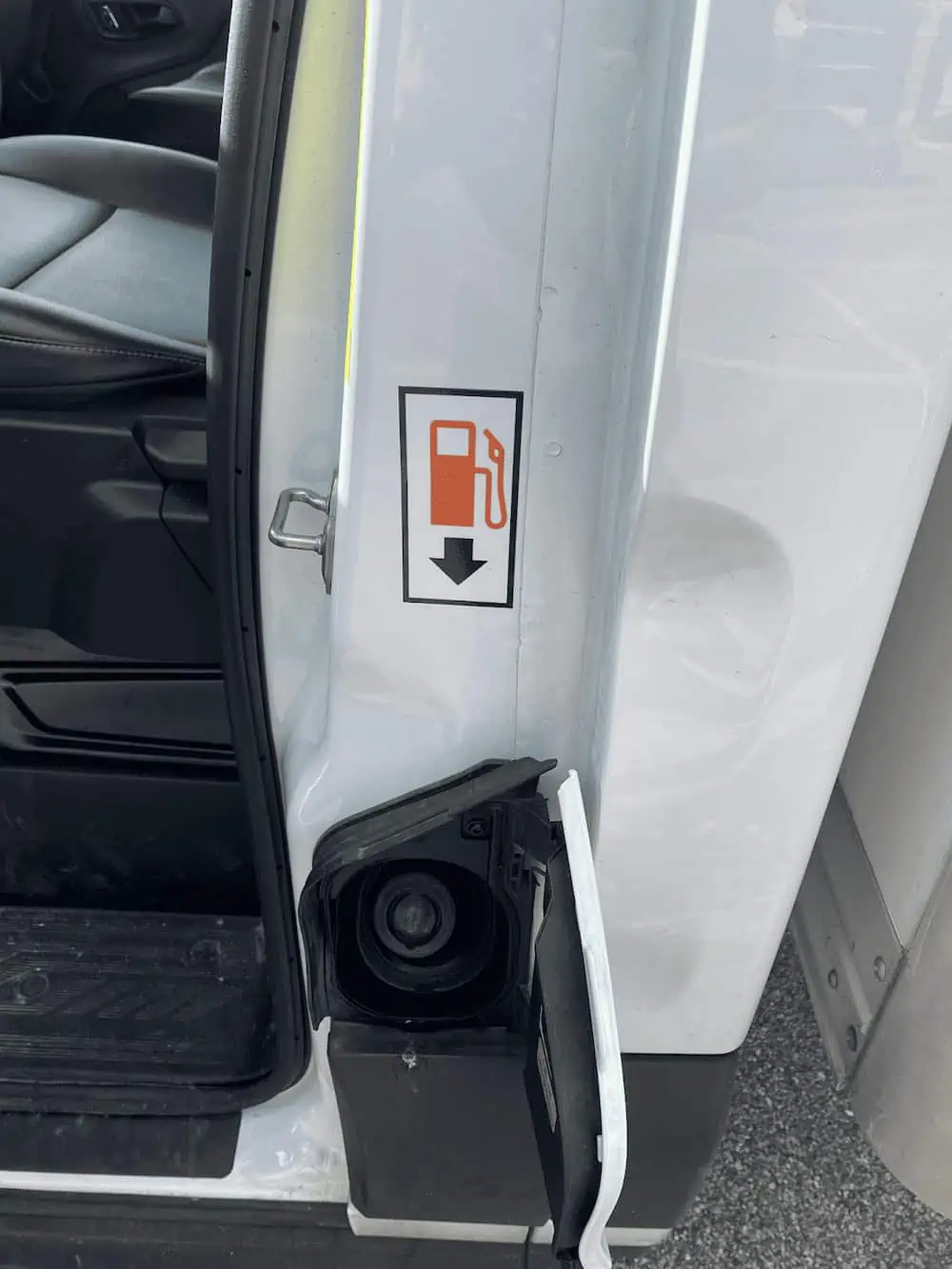
The truck we rented was a new Ford Transit 350 HD, and it was quite fuel-efficient. It even had a little MPG indicator on the dash that tells you how you’re doing. Ours got 12 miles to the gallon. We drove 8 miles and only spent $1.39 to top it off when we were done.
U-Haul Rental Truck Fuel Efficiency
U-Haul’s 10-foot rental truck gets up to 12 miles to the gallon under ideal driving circumstances. Once you’ve loaded the truck with all your belongings, expect that number to drop. MPG estimates for the larger trucks cap out at 10 miles per gallon, under ideal circumstances.
Ease of Driving: Home Depot vs. Uhaul Truck Rentals
Driving a Home Depot Rental Truck
Home Depot’s box truck is smaller than most U-Haul trucks, plus the fleet is relatively newer. As a result, driving a Home Depot truck might be more comfortable and feel more like driving a pick-up truck than a boxy moving truck. The cab is lower and easier to get into, parking is less of an issue, and the wide mirrors mean visibility is generally good.
Driving a U-Haul Rental Truck
U-Haul’s fleet has been around longer, and some rentals simply aren’t as new as others. The 10-foot trucks should be relatively easy to drive (like Home Depot’s 12-foot rental), but the larger models can be more challenging to maneuver and ride a little rougher.
| Which moving truck is better, U-Haul or Home Depot?
When it comes to comfort and how easy it is to drive — the smaller, newer Home Depot trucks are probably better. At the same time, within U-Haul’s vast fleet of trucks, it really depends on how new or old your particular rental is. |
Coverage Options: Home Depot vs. Uhaul Truck Rentals
Home Depot Coverage Options
Home Depot only offers a damage protection plan for 15% of the cost of a rental. It covers up to $500 of repair costs for non-collision physical damage and also covers replacement charges of non-collision damage (not including theft). However, the coverage doesn’t include damage protection for your cargo, personal liability, or injury protection.
“Basically, a daily U-Haul rental is only cheaper than Home Depot if you keep your mileage low enough.”
Instead, they take your insurance information, and your own car insurance provider is placed on the hook. So definitely be sure to take pictures of your truck before and after the rental!
U-Haul Coverage Options
U-Haul has several coverage options at various price points — from simple roadside assistance to supplemental liability coverage, cargo protection, and more. Between Home Depot and U-Haul, U-Haul definitely has more and better coverage options.
Reservation Process: Home Depot vs. Uhaul Truck Rentals
Reserving a Home Depot Rental Truck
Home Depot allows you to search for stores with available trucks in your area — which is convenient — but then you have to sign in or create an account and pay a deposit to reserve a truck. Reservations are done through the same system used to reserve tool rentals, so the wording can seem a bit funny at times.
A two-hour rental reservation required a $150 deposit or credit card hold — almost triple the rental price. Of course, it’s just a deposit and will be refunded when the truck is returned (as long as everything is in order).
Reserving a U-Haul Rental Truck
U-Haul’s online reservation system is streamlined and easy to use. After specifying when and where you want to rent a truck, you compare rates, select pickup and drop-off locations, choose coverage, and any other add-ons you might need. The only downside might be all the “upsell” pages that you have to click through to get to your quote. But if you need the add-ons, then it’s actually super helpful.
Returning the Truck: Home Depot vs. Uhaul Truck Rentals
Returning a Home Depot Rental Truck
Home Depot trucks must be returned to the same location they were picked up from. Each truck is rented out with a full tank of gas, and you’re expected to top it off before returning it. If you don’t, Home Depot may automatically charge a refueling fee, which is typically higher than the average price at a gas station. So be sure to top it off, snap a pic, and keep your gas receipt! The Tool Rental associate will ask to see the receipt, which covers you for any fuel used on the way back from the gas station to Home Depot.
Returning a U-Haul Rental Truck
When you pick up your U-Haul truck, your paperwork should indicate the current fuel level, but it’s always a good idea to double-check before taking off. You’re responsible for returning the truck with the same amount of fuel as when you picked it up, otherwise (you guessed it) you’ll be charged a fuel replacement fee. Remember to remove any garbage and give the truck a quick sweep, or you may be charged a cleaning fee as well.
Pros and Cons: Home Depot vs. Uhaul Truck Rentals
So, with all this in mind, how does Home Depot stack up against U-Haul when it comes to moving truck rentals?
Pros and Cons: Home Depot Truck Rentals
| Pros | Cons |
|
|
Pros and Cons: U-Haul Truck Rentals
| Pros | Cons |
|
|
These are the primary differences between Home Depot and U-Haul truck rentals — plus the fact that Home Depot has no liability coverage available. While this means you may not be covered in case of damage to your items, this can also mean a cheaper final price tag. The truck is still covered by your own auto insurance, proof of which is required to rent the truck in the first place.
Perhaps the biggest Home Depot benefit is the fact that there’s no mileage fee whatsoever!
When you compare this to U-Haul’s pricing policy, it’s kind of a big deal. U-Haul’s mileage fee is usually around $1.00 per mile (give or take, depending on location). This means if you have a 100-mile round trip, you’re going to spend around $100.00 on the mileage fee, plus the day rate ($29.95) and insurance ($15.00). When all is said and done, it adds up to about the same as Home Depot’s package price for one day ($149) for their box truck.
“Although Home Depot’s fleet includes two different flatbed trucks and a cargo van, there is only one size of moving truck available: the 12-foot box truck…[which] fits right between the two smallest U-Haul trucks with a volume capacity of 515 cubic feet.”
Another advantage of Home Depot is that the Home Depot Rental Center is usually open from 6 a.m. to 10 p.m., depending on the store. That means you can start your moving day early if you want — definitely a good idea in the summer when afternoons are sweltering (Although if you’re tech-savvy, U-Haul’s 24/7 Service allows you to do early pick-up via the U-Haul app). For day-long rentals, you have a full 24 hours to use the truck before you need to return it.
Which Is Better? Home Depot vs. Uhaul Truck Rentals
We’ve said this before, and we’ll say it again: U-Haul wins the short-distance race against virtually all of its competitors. So, if you need a truck for a quick in-town move, U-Haul’s pricing is really hard to beat — unless you can load, drive, and unload a small apartment and drop off your truck in under 75 minutes.
But if you’re only moving a few pieces of large furniture and that’s it, or if you have lots of miles to drive and don’t mind dropping off the truck where you picked it up, then Home Depot becomes a very nice alternative.
Making the Most of Your Moving Truck Rental
Hiring professional movers on an hourly basis can make a huge difference when using a time-sensitive moving solution. Since Home Depot is all about the hourly rate, having movers expedite the move can shave some time off of that final bill. But not only that, they can use their Tetris skills to pack the truck way more efficiently than most of us ever could. This means secure belongings that don’t shift in transit (aka less damage) and fewer trips back and forth.
This article will help you determine how many movers you’ll need to hire. Once you’ve calculated the magic number, you get a free quote here.
Whichever solution you choose, good luck with your move!

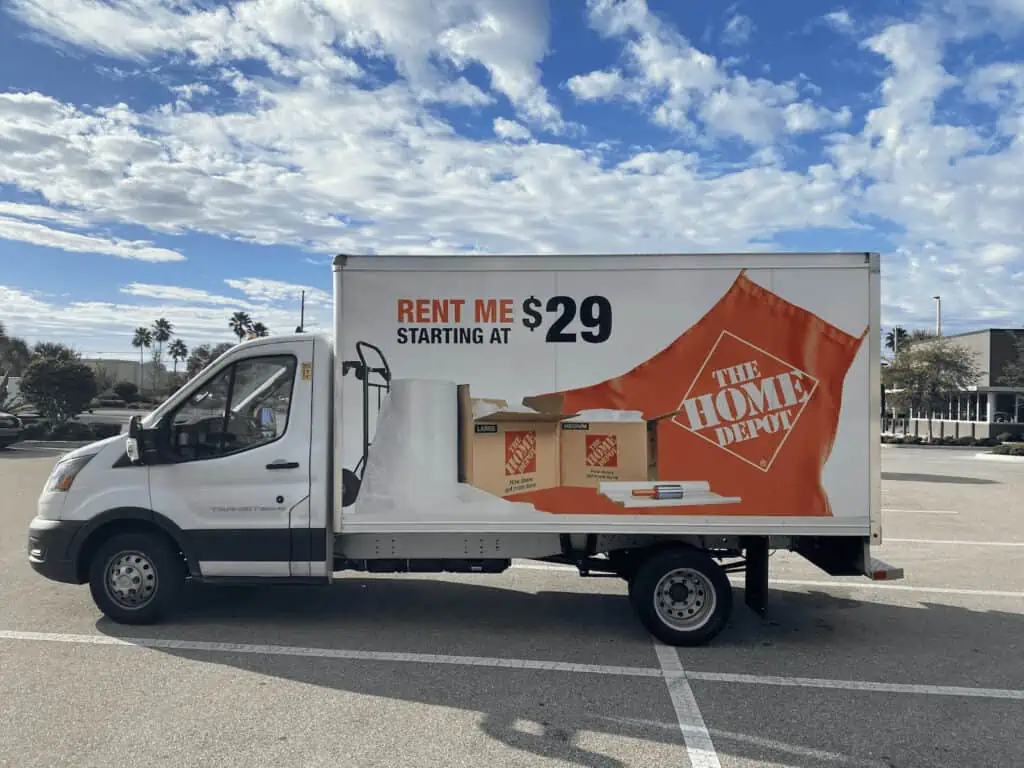

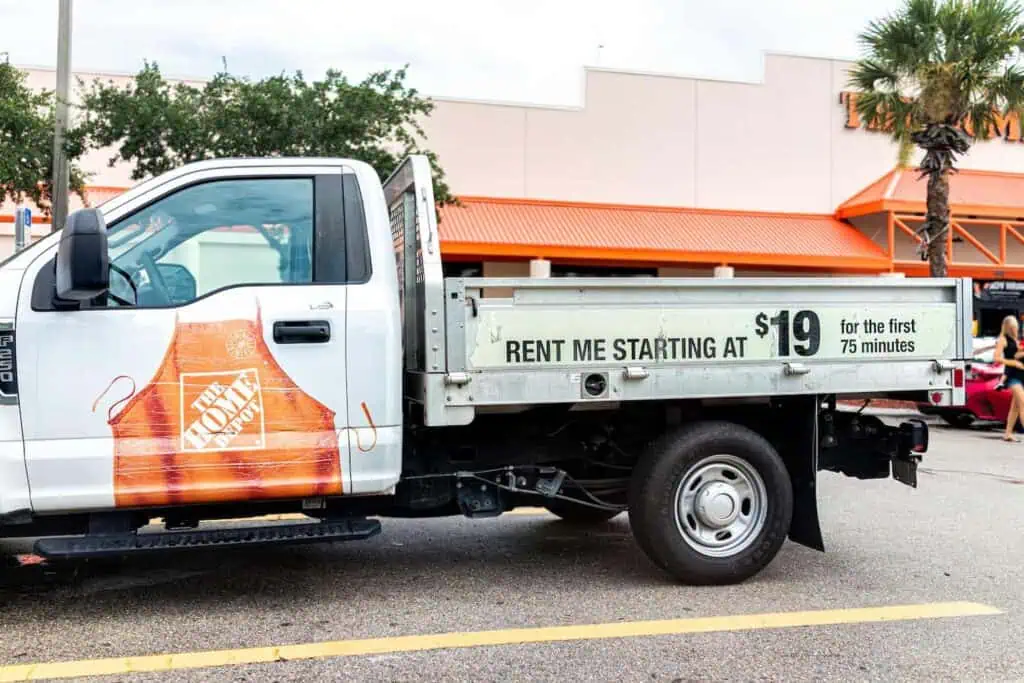
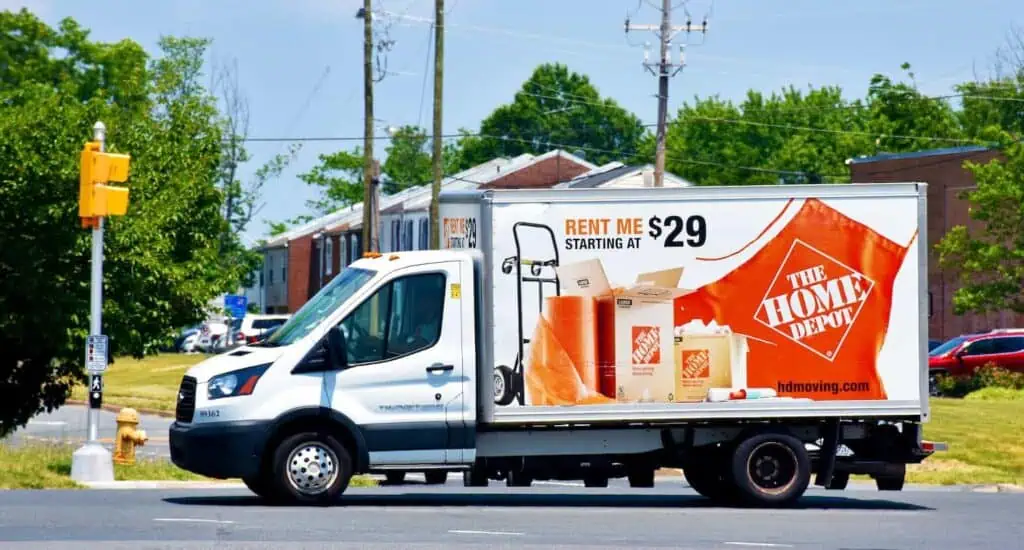





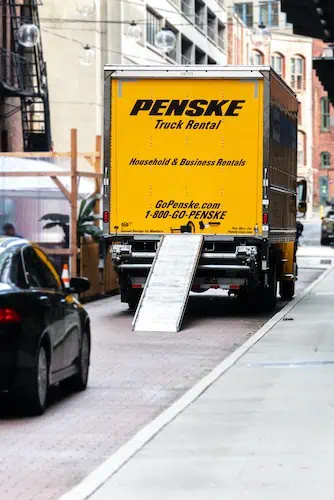 At that time, U-Haul was the clear winner with a final rental price (before driving) of $34.95 — about $21 cheaper than Penske. At the time, however, Penske charged a full $0.20 less per mile than U-Haul, which meant that after driving a certain distance, the Penske truck would become the more affordable option.
At that time, U-Haul was the clear winner with a final rental price (before driving) of $34.95 — about $21 cheaper than Penske. At the time, however, Penske charged a full $0.20 less per mile than U-Haul, which meant that after driving a certain distance, the Penske truck would become the more affordable option. 


 I rarely had a customer who
I rarely had a customer who 

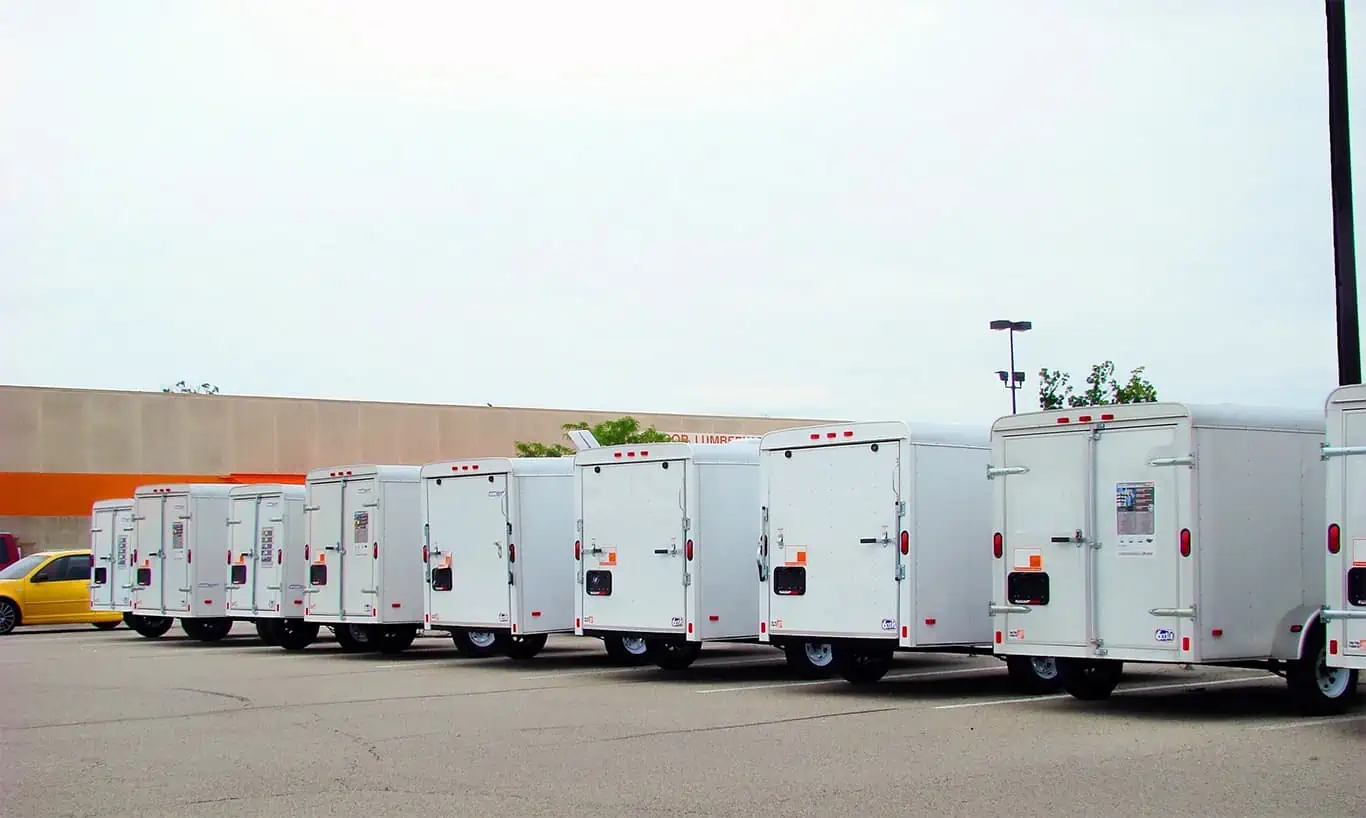
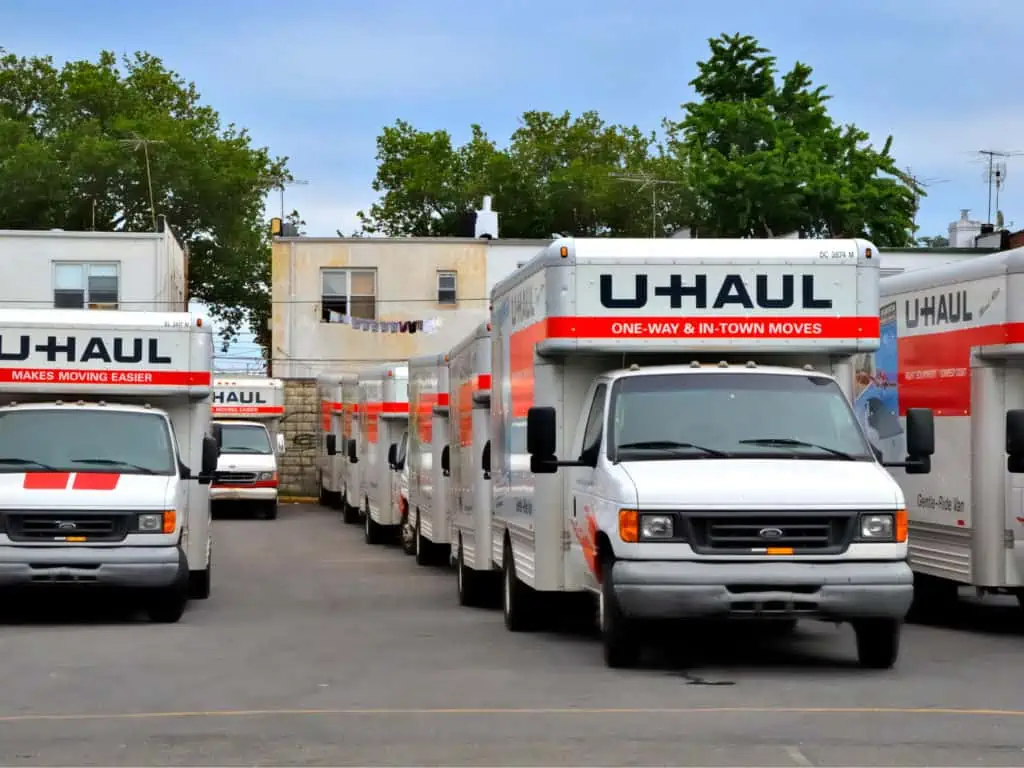

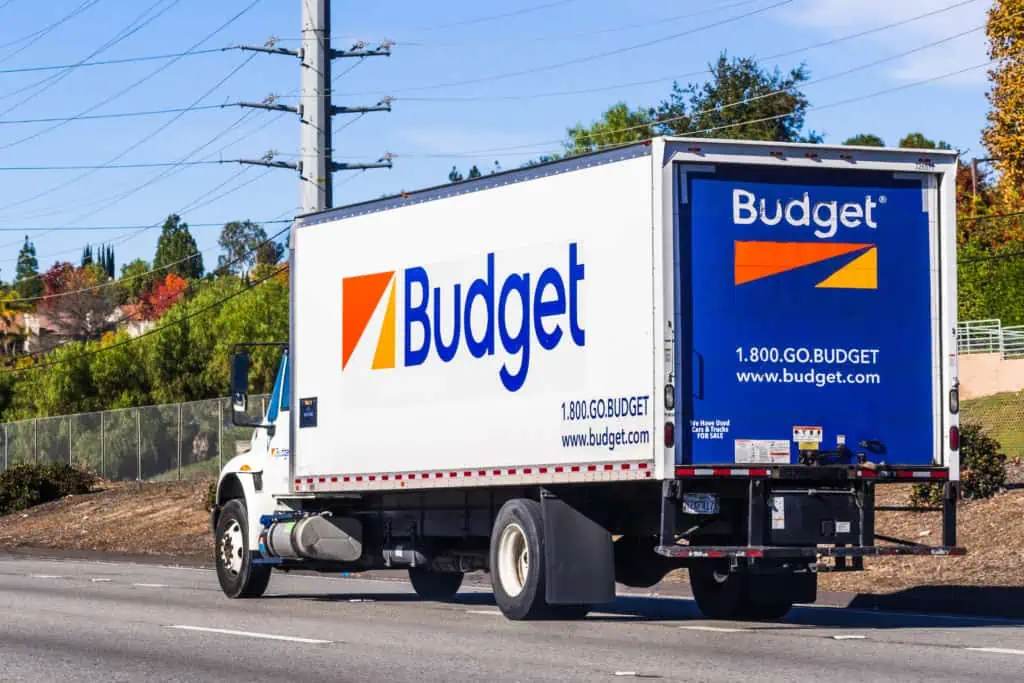
 3. A/C on the highway (go easy!), windows down on the streets
3. A/C on the highway (go easy!), windows down on the streets
